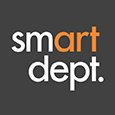From the desk of Seattle recruiter: Beth Miller
Corporate Culture. It’s the newest catchphrase for employers and job seekers alike. As the job market evens out, candidates are more concerned with work/life balance than finding a job they actually enjoy rather than just a number on a paycheck. Similarly, employers understand that happier, more engaged employees will stay longer and produce more, creating a shift toward culture fit and soft skills in many of the creative and marketing roles we’re staffing. I’ve experienced both sides of the culture equation – a great culture fit (thank you, smartdept. inc.), and a lousy one (we’ll be vague on the specifics). I’ve found a company with values that are similar to my own personal goals of professional growth and philanthropy, and I feel supported in my role.
But what does “culture” look like when you’re a freelancer? Here are a few things I like to keep in mind to gauge whether a candidate is a good long-term fit for a client.
First, take note of the physical space of the office you might be working in. Is it loud and bright, or mellow and dark? Is it an open area, or cubed? Is there music on or does everyone have ear-buds in? As much as skill set is a factor in determining whether or not a candidate is qualified for a position, it’s equally important to ensure a candidate can work in the physical space.
Second, ask process-focused questions. Having a firm understanding of how projects and tasks are managed, what the daily workflow looks like and understanding how your peers, managers and teams will interact is important. As a recruiter I do my best to set clear expectations at the beginning of any interaction with our candidates. Communication is key, and understanding how communication works within an organization can determine whether a candidate will be a good fit.
The final thing to keep in mind when assessing culture fit is whether the core values of an organization are similar to your own values. Employees come and go, and yes, corporate culture can (and probably should) evolve as there are advances in technology, organizational growth and new hires joining a company, but if you agree with the core values of an organization that’s a huge indicator that the role could be a long term fit.
Spending time thinking about culture fit, whether you’re a candidate or employer, is an important piece to the hiring puzzle.
– Beth





